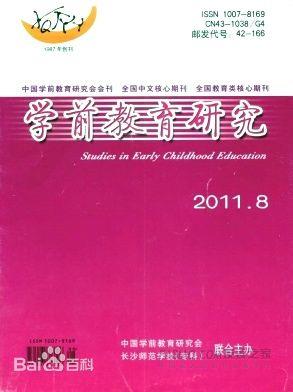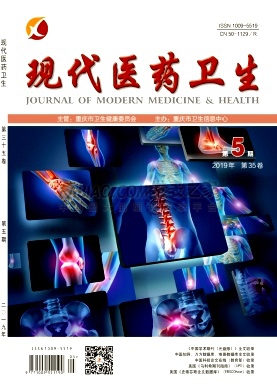一、引言
“像你们测绘工程专业的女生,就业形势非常严峻。大部分的单位都只要男生不要女生,但跟着男朋友一块儿签就好多了,就像买东西,一个好的搭一个孬的。”[1]一位工科专业男性教授在课堂上所讲的一段话引得了男同学一片掌声和女同学一片摔书声。见微知著,这一案例足以反映STEM(STEM是科学、技术、工程、数学四门学科的英文——Science、Technology、Engineering、Mathematics 的首字母的缩写)领域中的女性处于何等艰难境地。据2013年《高校招生性别歧视报告》,全国112 所“211 工程”高校中有近七成在2013年高考招生中存在性别歧视,其中34 所高校违反教育部政策规定。[2]
近年来,STEM 领域在国家经济发展中具有越来越重要的地位。而女性在STEM领域的代表性严重不足、女性理工科人才稀缺成为一种全球现象。美国人口普查局的统计数据显示,2009年,25 岁以上的成年人中,拥有学士以上学位的女性占29%,男性为30%,男女之间基本不存在差异。然而在STEM领域女性只占到大约10%的人口比例。[3]欧洲工科学生人口数据统计结果也表明了同一个问题,即目前在大多数国家女性占接受高等教育学生人数的一半以上,但在STEM 专业女性所占比例却很小。[4]也就是说,尽管在高等教育中女生人数所占比例较高,但在STEM专业远未达到半数。
因此,提高女性在STEM 领域的参与程度是当今非常值得关注的议题,它不仅关乎女性的个体发展,更关乎教育公平和社会公平问题。[5]为此,本文对国际上有关女性参与STEM 教育和实践的研究进行深入分析,以期展现女性参与STEM 领域的现状,揭示存在的共性问题,以探寻改善之途。
二、研究方法
本文选取Education Full Text、Scopus、Eric 教育数据库,以Female/Women Students 及Female/Women Engineers 与Engineering Education、STEM、STEM Education、Technology E ducation、Science Education字段组合为关键词,分别以关键字、题目和摘要为范围展开搜索,获取2000—2018年在国际期刊以英文语言公开发表的学术文章。排除文献的标准是:与研究对象明显不相关的、重复的、非实证研究的文献。根据以上标准,笔者分别对所获取的217 篇文章研读甄别,最后筛选出符合研究要求的论文83 篇。运用文本分析法(document Analysis),对研究发现进行编码、分类、主题提取,最后总结概括为以下六个主题来加以论述。
三、研究发现
(一)STEM领域存在性别差异
研究发现,在STEM 领域男女的背景特征、专业参与因素和学业成绩上确实存在着差异。Chou和Dutta 的研究指出,女性在工程专业的学习上比男生面临的困难更多。[6][7]Stonyer、Archer、Ro 和Reilly 等人的研究发现男女之间在工程智力和能力上都不存在明显的差异,没有优劣之分。虽然女性缺乏工程实践操作的能力,但是处理人际问题的能力更强。[8][9][10][11]
Kamphorst 通过研究发现工程专业中女学生比男学生更优秀,女生愿意花费更多的时间在工程专业学习上,愿意努力学习获得更多的学分,如果她们对工程专业感兴趣,也会比男生更愿意留在工程专业。[12]
可见,虽然男女在STEM 领域确实存在性别差异,但是并没有优劣之分。不能将性别作为评判谁应在STEM 领域去留的标准,男女应该在STEM 领域获得平等的话语权。
(二)女生专业选择影响因素多样
专业选择的过程是学生不断内化观念,不断权衡和选择的艰难复杂的过程。专业选择涉及的不仅仅是学生个人的兴趣和意愿的问题,还有家庭文化资本的重要影响。
研究发现,女生在K-12 阶段对工程专业不感兴趣会直接影响她们对大学专业的选择。Godwin等发现,女生如果在K-12 阶段没有感受到科学和工程的魅力就不会对接受工程和科技高等教育产生兴趣。因此提出可以通过展示工程的实用性,让学生感受工程学改变世界的力量,这能极大提升学生,尤其是女学生对STEM 领域的兴趣。[13]
此外,家庭文化资本对学生选择工程专业发挥非常重要作用,文化资本缺失会为学生带来选择劣势。Holmegaard、Martin、Miller 和Engstrm 等人有关家庭文化资本对于学生专业选择影响的研究共同指出,家庭对于STEM专业学生的专业选择产生直接影响。如果家长接受过STEM 专业教育,子女会更倾向于在STEM专业学习,并期望获得更高成就。他们能更好依靠家庭提供的资本支持完成学业,还能获得父母或者兄弟姐妹在专业上的指导。然后他们会将获得的STEM资本回馈给家庭,由此形成良性循环,不断提升自己的家庭资本。[14][15][16][17]研究发现,即使一些女学生在中学阶段对STEM 专业还比较感兴趣,并且表现也比较好,但当选择专业时还是没有进入到STEM领域学习,这就是家庭资本在其中起到的作用。尤其对于女大学生来说,如果她的家庭缺乏STEM资本,那么她就会很难选择进入STEM领域,这表明家庭文化资本直接影响了她的专业选择。
Archer 和Tonkaboni 在研究中还发现,虽然家庭文化资本与学生学习STEM 专业的兴趣呈正向相关关系,但是家庭文化资本对于男女的影响不是均等的,家庭文化资本更有利于男生从事STEM专业。[18][19]可见家庭文化资本对学生的影响还存在着男女差异。
(三)对STEM 领域女性的刻板印象负面影响较大
Degol、Wang 和Mlambo 发现 男 女 在STEM 领域中代表性的差异最重要的不是智力和能力上的差异,而主要在于社会刻板印象为女性带来的负面影响,限制了她们在STEM 领域的发展。男女在能力上的差异越来越不明显,而他们主要存在的是职业兴趣和生活方式观的差异。[20][21][22]Haines 也通过量化分析推翻了在工程专业中男生优势资本和女生劣势资本累计的刻板假设。男女确实从一开始就存在着差异,女性尤其是在物理专业的学习上存在着劣势,但是在后期的学习中女生还是能够通过持续的坚持和努力追赶上男生,对物理产生兴趣,缩小差距。[23]
Morris 和Powell 指出现在STEM 领域对于女性刻板印象的表现形式更加隐蔽,但是并没有消失。STEM 领域现在以更加隐含的方式表达对于女性的歧视,这些观念可能会在日常生活中或其他非正式场合表达出来。[24][25]Heilman 的研究发现,目前STEM 领域的刻板印象表现为对女性属性的同化,使女性的气质越来越趋向于男性,以维护男性的主导地位。[26]其他研究也有类似观点,女性正在被这种性别偏见的文化“同化”,女性成为谋害自己的“帮凶”,女生不断让自己适应这种男性主导的工程文化,改变自己,寻求外部的、男性的认可,这本身就是一种妥协和同化。[27]女性的刻板印象一直存在于STEM 领域中,但是培养学生消除这种有关性别意识的刻板印象的措施还没提到。[28]
刻板印象对女性最深远的影响就是会挫伤她们的积极性,损坏她们的自我效能感,限制她们在STEM 领域的进一步发展,甚至让她们主动离开STEM领域。
(四)STEM领域女性自我效能感普遍较低
Besterfield-Sacre、Mcloughlin、Du、Hutchison-Green、Capobianco、Meyers、Galdi、Deemer、Sax和Schnittka等人对STEM 专业女生自我效能感的研究共同指出,女性的自我效能感低于男性,即她们无论是在面对STEM 专业的学习还是就业时都表现得比男生更缺乏自信。[29][30][31][32][33][34][35][36][37][38]
研究认为,造成这种现象的原因主要有五个方面。第一,因为男女在动手实践能力上的差异,女生的动手实践能力普遍比男生要差,而STEM 专业是一个对动手实践能力要求较高的专业,因此在实操环节女生就没有获得像男生一样的成就感,也就导致了女生的自信心不足。第二,男女思维方式的差异造成了男女效能感的差异,男生更倾向于将成功归因于他们自身的努力,而将失败归因于外部因素;但是女生更倾向于将失败归因于自身的能力,因此女生在学习中就比男生更容易感到失败。第三,由于刻板印象和性别歧视阻碍了女性在STEM 领域的进一步发展,造成了STEM 是男性主导的领域的刻板印象,让更多的女性不想也不敢去STEM领域发展。社会营造了STEM专业与女性气质不符的文化氛围,如果女性想要在STEM专业发展,就需要性格气质的调试以适应这种文化氛围,这也就造成了女性的认知偏差,影响了女性自我认同的形成。第四,家庭环境也有很重要的影响,家庭文化资本的影响往往更鼓励男生去STEM 领域发展,但是也有研究指出如果母亲从事与STEM有关的工作,就会比较有利于鼓励女生选择STEM专业。第五,学校教育造成了男性主导氛围的形成,限制了女生在STEM 领域的“想象力”。无论是课堂上老师对于课程的讲解,还是实践活动和小组活动中的分工合作,都会造成男生更适合而女生并不适合STEM专业学习的刻板印象。
女性的自我效能感对于她们的发展来说非常重要,如果女性能获得强烈的自我认同感,她们就可以克服困难,打破性别偏见,在STEM 领域获得更好的发展。[39][40]比较那些坚持留在STEM领域的女性,研究发现她们有一些共同特点:她们对于自己有比较强烈的认同感,当面对STEM 专业出现的种种困难时,这种自我认同感能够支持女性克服这些困难,使她们能够在STEM 专业中找到充实而有益的经验,因此她们没有选择离开STEM 领域,最终成为STEM领域的女性榜样。[41][42]就目前的发展形势来看,女性的参与甚至推动了整个STEM 领域向前发展。[43][44]
总体而言,在STEM 领域女性的自我效能感低于男性,并且这种状况已经持续了一段比较长的时间。女性自我效能感低与女性在STEM领域处于发展劣势二者互为因果,女性的发展劣势降低了女性的自我效能感;同时由于女性自我效能感低,也就更使得她们处于发展的劣势。
(五)导致女性脱离STEM 领域的因素来自社会、家庭和自我
女性在本科阶段对于STEM 专业的体验感对她们在STEM专业的去留有深刻的影响。女生在本科阶段对于STEM专业的负面体验感,会导致她们离开STEM领域。Gayles 发现在前两年内成功完成科学课程的数量与坚持留在STEM 专业的持久性有正相关关系,并且这种关系对于女生来说更为明显。[45]Amelink、Garibay 和Benso 的研究同样发现,女生在本科阶段对于STEM 专业的学习和生活中获得的感受会直接影响她们是否在STEM 领域深造或者工作。如果体验感不足或消极,女性就会离开STEM领域。[46][47][48]数学对女性在STEM领域留存尤其重要。Moakler 发现数学成绩会影响STEM 领域中女生的自我效能感,一般来说女生的数学成绩越优秀,她们就越愿意学习STEM 相关专业并愿意留在STEM领域,并更有信心克服该领域的刻板印象和偏见。在数学领域本就存在对女性的刻板印象,若她们能在数学上表现得好,那么就能直接提升她们的自信心。[49]
对女性工程师和科学家来说,工作场所的环境会影响她们的去留。女性更愿意留在更具包容性的工作环境中,这样更有利于她们获得归属感,女性会离开她们认为自己被排除在外的工作环境。[50]对于STEM 领域女性所处的工作氛围对女性的排他性,Rhoton、Stainback、Amon、Ruel 和Smith 等人的研究发现,由于男性在STEM 领域占据数量上的优势,目前就形成了男性占主导的工作氛围。在STEM 领域男性同伴经常会忽视女性的能力,使得女性在工作中得不到应有的肯定,并且整个工作氛围形成了对女性的刻板印象,女性要花费比男性更多的时间和精力去证明自己的能力,来打破这种职业偏见。[42][51][52][53][54]Faulkner 和Hatmaker 研究女性工程师时都发现,女性要花费更多的努力来适应和证明自己的工程师身份,这就是一种男女不平等的体现,在男性占主导的领域中女性的处境很艰难,女性工程师的发展处境很不利。[43][55]
Hunt 的研究指出,女性离开STEM 领域最重要的原因是对于薪酬和晋升机会不满。[56]那些选择留在STEM 领域的女性毕业生在她们的工作中也面临着一些问题。第一个问题就是薪资待遇问题。Beyer、Davies 和Sassler 的研究都涉及女性在STEM 领域的薪资待遇问题,他们一致指出女性的薪资待遇低于男性,这也是性别不平等的表现,长此以往就会形成恶性循环。[57][58][59]
家庭因素是STEM领域的女性面临的一个共同问题。相比男性,女性更容易承担多重身份,比男性更容易面临家庭与工作的冲突问题。女性常把家庭放在第一位,当事业与家庭发生冲突时,她们经常会选择家庭第一,因而离开了STEM领域。[60][61][62][63]Cha的研究指出,劳动时间过长会造成女性与家庭生活之间的冲突,进而使女性离开以劳动力为标志的男性占主导的STEM领域。[64]Koul 经过分析发现,如果女性能平衡好家庭和工作之间的关系,那么她们比其他女性更能获得在STEM 专业的职业认同感和自我概念。[65]可见,家庭因素对于女性在STEM专业的发展有举足轻重的影响。
(六)支持对STEM领域女性极其重要
相比男性,女性更希望得到心理和精神上的支持,因此建立支持对于女性来说至关重要。女性的支持主要来源于母亲、教师、成功的女性榜样和相关制度。Raddon 和Ainara 的研究指出,母亲在女性的自我定位上发挥了重要作用,对女性的自我认知有很重要的影响。母亲外出工作有利于家庭中的女儿提升成绩,提升自我效能感。[66][67]
教师作为女性学生的另一个成人榜样,如果能对女性给予关怀和支持,也会极大提升女生的自我效能感。正如Pawley、Young、Beyer、Meyer、Reilly、Li等人的研究提到,教师对于女性自我效能感的塑造和提升能产生重要影响,大学教师应该传递努力获得成功的信念,而不是以男女差异来作为学生发展的评判依据。同时女教师为女学生带来的影响更为深远,如果女生以自己的女老师为榜样,那么老师就不仅仅是女学生模仿的榜样,更能帮助她们克服行业中的刻板印象,打破行业偏见,为她们带来心理和精神上的支持。[68][69][70][71][72][73]
但是如果没有从老师那里得到正面支持,会挫伤学生积极性,降低她们的自我效能感,不利于她们在工科领域发展。Beilock 和Mossracusin 发现,老师有时候也会为女学生带来负面影响。一方面,女学生往往喜欢将女老师当作自己的榜样和模仿对象,而女老师对某一学科的焦虑也会为学生带来对于这一学科的刻板印象,表现出焦虑;另一方面,教师对于女学生的偏见会打击她们的自信心,不利于她们在本来就不占优势的领域发展,缺乏教师的支持和关怀会极大地影响女性的自我效能感。尤其是女性教师对女学生的偏见,会更令女生产生无力感,感觉不到支持和关怀。[74][75]
在STEM 领域已经获得成功的女性作为榜样对于女生的支持也能帮助她们提升自我效能感。Dasgupta、Stout、Miller 和Milkman 等人都提到女性形成的自我概念得益于与女性专家的接触,通过接触STEM 领域的专家一方面可以使女生产生更加积极的内隐态度,另一方面也能增强她们的主观认同感,进而激励她们留在该领域以获得更加积极的发展。女生获得这些激励后能以更加积极的态度投入到学习中,能付出更多努力和坚持,这将更加有利于她们坚持留在STEM领域继续深造。女生比男生更容易受到榜样影响。但是榜样的力量对于男生的影响却微乎其微。[76][77][78][79]
社会和制度上对女性的支持亦可产生积极影响。Litzler、Yang 和Hall 从制定包容性政策、加大财政支持和创造包容性的校园氛围等角度分析了女性所获支持对她们的积极影响。[80][81][82]但Powell 指出,不恰当的帮助和支持反而起到了适得其反的作用。一方面对女性额外的帮助就表明了男女之间存在能力上的差异——女性不如男生,因此需要额外帮助;另一方面,这些帮助可能会挫伤女性的自信心和积极性,让她们也认同自己与男生之间存在的差异。最重要的是这种帮助可能会阻碍女性在职业生涯中获得与男性同等的发展速度,男女之间的差距将会越来越大。[83]所以究竟要怎样去更好地帮助STEM领域中的女性,还需要进一步研究和商榷。
四、对促进我国STEM 领域女性参与的启示
(一)消除社会对STEM领域女性的歧视观念
首先,性别歧视阻碍了女性在STEM 领域获得长远发展。男女在STEM 领域虽存在性别差异,但并无优劣之分。男性在体力、实践操作能力上比女性占优势,但是女性比男性更耐心、更细心、更善于与人交际。当今社会,工程的设计和发展更需要考虑女性的需求,因此更加需要女性为STEM 领域贡献智慧。随着科技的进步,有些领域可以通过技术手段来弥补女性在STEM领域的劣势。如生物医药工程专业,由于其专业自身的特点,大家普遍认为该专业只适合男生学习,但是随着社会的发展,目前生物医药专业越来越要求专业人员的分析能力、沟通技巧、创造力和解决问题的能力,而对于体力等生理因素上的要求越来越少,因此女性也能通过自己的努力而占据一席之地。
其次,女性应与家庭联系更紧密的社会刻板印象不利于女性参与STEMW 领域。人们更愿意将照顾家庭的责任分配给女性,男性更多的是承担家庭经济责任,即“男主外,女主内”。这种社会刻板印象的存在限制了女性在STEM 领域的发展,女性比男性面临更大的平衡工作—家庭之间关系的压力。
为此,相关部门需加大宣传力度,引导社会形成平等的职业观,消除社会性别偏见和刻板印象,为女性在STEM 领域的发展提供更多的机会和可能。少一些对于女性职业的“金科玉律”,多一些对女性的尊重和理解。
(二)干预专业选择,改变家庭文化资本对女性工程专业选择不利影响
家庭文化资本作为影响学生专业选择的重要因素,对工程专业的选择却也存在性别差异。家庭文化资本更有利于男性选择工程专业,若女性的父母没有从事STEM领域的相关工作,女儿很少会选择在STEM领域学习。为了提高女性在STEM领域的代表性,需要为她们提供更多选择工程专业的可能性,因此需要制定一些措施来干预女生的专业选择。比如,可以在K-12 阶段为学生提供一些合适的STEM课程,让她们尽早接触、了解与工程技术和科学相关的内容,这将有利于激发她们学习STEM专业的兴趣,有利于增加女性选择STEM专业的可能性,有利于改变家庭文化资本对女性专业选择的不利影响,有利于她们选择在STEM领域学习和深造。
(三)提升STEM领域女性自我效能感
为帮助STEM 领域女性提升自我效能感,需要让她们获得更多的成功经验。如前所述,数学成绩会影响程领域中女生的自我效能感。一般来说,女生的数学成绩越优秀她们就更愿意学习STEM 相关专业,日后也愿意留在STEM 领域,并更有信心克服刻板印象和偏见。[22][49]可以通过为学生提供支持性的学习环境,帮助她们在不擅长的学习领域中获得积极体验,以提升她们的自我效能感。STEM领域女性自我效能感的提升有利于女性获得积极体验,有利于提高女性在STEM领域的留存率。
五、结语
目前选择在STEM 领域学习的女性在数量上呈现出上升趋势,也涌现出了越来越多成功的女性代表,但是在STEM领域要达到男女比例协调还有很长的路要走,还有很多的困难要克服。[84]上述提到的三种干预措施,有利于消除社会对STEM 领域女性的歧视观念,有利于改变家庭文化资本对女性工程专业选择不利影响,有利于提升STEM 领域女性自我效能感。总体而言,这些干预措施一方面有利于改变公众的心态和看法以消除对女性的偏见,有利于女性在STEM 领域获得积极体验;另一方面也有利于为女性创造更多接触STEM 领域的机会,有利于女性更深入地了解STEM 领域,打破女性与STEM领域之间的隔膜。
上述干预措施也可以说是在为STEM 领域女性创建支持网络,为她们提供持续援助。正如Smith 的研究中所提到的,STEM 领域的女性不仅代表性不足,她们也不太可能坚持留在STEM 领域。因此了解影响职业决策的关键经验可以帮助教育工作者和雇主鼓励女性成功进入STEM 领域的相关岗位。[84]
总之,应重视STEM 领域的女性群体,鼓励女性坚定自己的选择,支持她们在专业学习中取得成功,进而成为成就卓著的STEM职业女性。
[1]中国绘测网.一个绘测专业女生的就业故事[EB/OL].http://tieba.baidu.com/p/,2016-03-07.
[2]妇女传媒检测网络.还女生平等——2013年“211”工程学校招生性别歧视报告[EB/OL].http://www.doc88.com/p- .html,2013-08-27.
[3]刘燕影.论女性在STEM 领域的成功[J].世界科学,2013,(3).
[4]Barnard S,Hassan T,Bagilhole B,et al.‘They’re not Girly Girls’:An Exploration of Quantitative and Qualitative Data on Engineering and Gender in Higher Education[J].European Journal of Engineering Education,2012,(2).
[5]Hill C,Corbett C,Rose A S.Why So Few?Women in Science,Technology,Engineering,and Mathematics[M].Washington,D.C.:American Association of University Women,2010.
[6]Chou P N,Chen W F.Female Engineering Students’Perceptions of College Learning Experiences:A Qualitative Case Study in Taiwan[J].International Journal of Engineering Education,2015,(1).
[7]Dutta D.Sustaining the Pipeline:Experiences of International Female Engineers in U.S.Graduate Programs[J].Journal of Engineering Education,2015,(3).
[8]Stonyer H.Making Engineering Students Making Women:The Discursive Context of Engineering Education[J].International Journal of Engineering Education,2002,(4).
[9]Archer L,Dewitt J,Osborne J,et al.“Balancing acts”:Elementary School Girls’Negotiations of Femininity,Achievement,and Science[J].Science Education,2012,(6).
[10]Ro H K,Knight D B.Gender Differences in Learning Outcomes from the College Experiences of Engineering Students[J].Journal of Engineering Education,2016,(3).
[11]Reilly,Erin D.Rackley,Kadie R.Awad,Germine H.Perceptions of Male and Female STEM Aptitude:The Moderating Effect of Benevolent and Hostile Sexism[J].Journal of Career Development,2017,(2).
[12]Kamphorst J C,Adriaan Hofman W H,Jansen E P W A,et al.Explaining Academic Success in Engineering Degree Programs:Do Female and Male Students Differ?[J].Journal of Engineering Education,2015,(2).
[13]Godwin A,Potvin G,Hazari Z,et al.Identity,Critical Agency,and Engineering:An Affective Model for Predicting Engineering as a Career Choice[J].Journal of Engineering Education,2016,(2).
[14]Holmegaard H T,Ulriksen L M,Madsen L M.The Process of Choosing What to Study:A Longitudinal Study of Upper Secondary Students’Identity Work When Choosing Higher Education[J].Scandinavian Journal of Educational Research,2014,(1).
[15]Martin J P,Simmons D R,Yu S L.Family Roles in Engineering Undergraduates’Academic and Career Choices:Does Parental Educational Attainment Matter?[J].International Journal of Engineering Education,2014,(1).
[16]Miller M K,Martin J P,Orr M K.Toward Determining Changes in Engineering-Related Social Capital:Resource Composition as Students Make Decisions about College[J].Journal of Education & Training,2014,(2).
[17]Engstrm S.Differences and Similarities Between Female Students and Male Students that Succeed within Higher Technical Education:Profiles Emerge through the Use of Cluster Analysis[J].International Journal of Technology & Design Education,2016,(4).
[18]Archer L,Dewitt J,Osborne J,et al.Science Aspirations,Capital,and Family Habitus:How Families Shape Children’s Engagement and Identification with Science[J].American Educational Research Journal,2012,(5).
[19]Tonkaboni F,Yousefy A,Keshtiaray N.The Relationship Between the Curriculum of Higher Education and Social Capital[J].Journal of Education & Training,2013,(1).
[20]Wang M T,Degol J.Motivational Pathways to STEM Career Choices:Using Expectancy-Value Perspective to Understand Individual and Gender Differences in STEM Fields[J].Developmental Review Dr,2013,(4).
[21]Wang M T,Degol J L.Gender Gap in Science,Technology,Engineering,and Mathematics(STEM):Current Knowledge,Implications for Practice,Policy,and Future Directions[J].Educational Psychology Review,2017,(1).
[22]Mlambo Y A,Mabokela R O.“It’s More Flexible”:Persistence of Women Engineers in the Academy[J].European Journal of Engineering Education,2017,(3).
[23]Haines V A,Wallace J E,Cannon M E.Exploring the Gender Gap in Engineering:A Re-Specification and Test of the Hypothesis of Cumulative Advantages and Disadvantages[J].Journal of Engineering Education,2001,(4).
[24]Morris L D K,Daniel L G.Perceptions of a Chilly Climate:Differences in Traditional and Non-Traditional Majors for Women[J].Research in Higher Education,2008,(3).
[25]Powell A,Sang K J C.Everyday Experiences of Sexism in Male-Dominated Professions:A Bourdieusian Perspective[J].Sociology,2015,(5).
[26]Heilman M E.Gender Stereotypes and Workplace Bias[J].Research in Organizational Behavior,2012,(1).
[27]Yu Y.Using “Classic Reading Instruction”to Raise Students’Gender Awareness:Students’Perceptions of Their Learning Experiences at a Taiwanese University[J].Asian Journal of Women’s Studies,2018,(1).
[28]Louise Archer,Jennifer DeWitt,Jonathan Osborne,et al.“Doing”Science Versus“Being”a Scientist:Examining 10/11-yearold Schoolchildren’s Constructions of Science through the Lens of Identity[J].Science Education,2010,(4).
[29]Besterfield-Sacre M,Moreno M,Shuman L J,et al.Gender and Ethnicity Differences in Freshmen Engineering Student Attitudes:A Cross-Institutional Study[J].Journal of Engineering Education,2001,(4).
[30]Mcloughlin L A.Spotlighting:Emergent Gender Bias in Undergraduate Engineering Education[J].Journal of Engineering Education,2005,(4).
[31]Du X Y.Gendered Practices of Constructing an Engineering Identity in a Problem-based Learning Environment[J].European Journal of Engineering Education,2006,(1).
[32]Hutchison-Green M A,Follman D K,Bodner G M.Providing a Voice:Qualitative Investigation of the Impact of a First-Year Engineering Experience on Students’Efficacy Beliefs[J].Journal of Engineering Education,2008,(2).
[33]Capobianco B M,French B F,Diefes-Du H A.Engineering Identity Development Among Pre-Adolescent Learners[J].Journal of Engineering Education,2012,(4).
[34]Meyers K L,Ohland M W,Pawley A L,et al.Factors Relating to Engineering Identity[J].Journal Article,2012,(1).
[35]Galdi S,Cadinu M,Tomasetto C.The Roots of Stereotype Threat:When Automatic Associations Disrupt Girls’Math Performance[J].Child Development,2014,(1).
[36]Deemer E D.Women’s Science Major Satisfaction:Regulatory Focus and the Critical Mass Hypothesis[J].Journal of Career Development,2015,(1).
[37]Sax L J,Kanny M A,Riggers-Piehl T A,et al.“But I’m not Good at Math”:The Changing Salience of Mathematical Self-Concept in Shaping Women’s and Men’s STEM Aspirations[J].Research in Higher Education,2015,(8).
[38]Schnittka J,Schnittka C.“Can I Drop it this Time?”Gender and Collaborative Group Dynamics in an Engineering Design-based Afterschool Program[J].Journal of Pre-College Engineering Education Research(J-PEER),2016,(2).
[39]Marra R M,Rodgers K A,Shen D,et al.Women Engineering Students and Self-Efficacy:A Multi-Year,Multi-Institution Study of Women Engineering Student Self-Efficacy[J].Journal of Engineering Education,2009,(1).
[40]Hughes R.An Investigation into the Longitudinal Identity Trajectories of Women in Science,Technology,Engineering,and Mathematics[J].Journal of Women and Minorities in Science and Engineering,2015,(3).
[41]Marra R M,Rodgers K A,Shen D,et al.Women Engineering Students and Self-efficacy:A Multi-year,Multi-institution Study of Women Engineering Student Self-Efficacy[J].Journal of Engineering Education,2009,(1).
[42]Perelli S,Buse K,Bilimoria D.Why They Stay:Women Persisting in US Engineering Careers[J].Career Development International,2013,(2).
[43]Faulkner W.Doing Gender in Engineering Workplace Cultures.II.Gender in/Authenticity and the in/Visibility Paradox[J].Engineering Studies,2009,(3).
[44]Hatmaker D M.Engineering Identity:Gender and Professional Identity Negotiation among Women Engineers[J].Gender,Work& Organization,2013,(4).
[45]Gayles J G,Ampaw F.To Stay or Leave:Factors that Impact Undergraduate Women’s Persistence in Science Majors[J].Naspa Journal about Women in Higher Education,2016,(2).
[46]Amelink C T,Creamer E G.Gender Differences in Elements of the Undergraduate Experience that Influence Satisfaction with the Engineering Major and the Intent to Pursue Engineering as a Career[J].Journal of Engineering Education,2010,(1).
[47]Garibay J C,Hughes B,Eagan M K.Beyond the Bachelor’s:What Influences STEM Post-Baccalaureate Pathways[A].Postcollege STEM Pathways[C].Long Beach:Association for Institutional Research Annual Forum,2013.
[48]Benson G.Why Do So Few Female Students Select Industrial Distribution as Their Academic Major?[J].Journal of Technology,Management & Applied Engineering,2014,(2).
[49]Moakler M W,Kim M M.College Major Choice in STEM:Revisiting Confidence and Demographic Factors[J].Career Development Quarterly,2014,(2).
[50]Smith N E,Costello S B,Wilkinson S.Sticking It Out:How Influence and Inclusion Motivate Women to Stay in Civil Engineering[J].Proceedings of the Institution of Civil Engineers-Municipal Engineer,2018,(3).
[51]Rhoton L A.Distancing as a Gendered Barrier:Understanding Women Scientists’Gender Practices[J].Gender & Society,2011,(6).
[52]Stainback K,Ratliff T N,Roscigno V J.The Context of Workplace Sex Discrimination:Sex Composition,Workplace Culture and Relative Power[J].Social Forces,2011,(4).
[53]Amon M J.Looking through the Glass Ceiling:A Qualitative Study of STEM Women’s Career Narratives[J].Frontiers in Psychology,2017,(8).
[54]Ruel S.The“Silent Killers”of a STEM-Professional Woman’s Career[J].Equality,Diversity and Inclusion:An International Journal,2018,(7).
[55]Smith K N,Gayles J G.“Girl Power”:Gendered Academic and Workplace Experiences of College Women in Engineering[J].Social Sciences,2018,(1).
[56]Hunt J.Why Do Women Leave Science and Engineering?[J].Cepr Discussion Papers,2010,(1).
[57]Beyer S.Low Awareness of Occupational Segregation and the Gender Pay Gap:No Changes Over a 16-year Span[J].Current Psychology,2018,(1).
[58]Davies S G,McGregor J,Pringle J,et al.Rationalizing Pay Inequity:Women Engineers,Pervasive Patriarchy and the Neoliberal Chimera[J].Journal of Gender Studies,2018,(6).
[59]Sassler S,Michelmore K,Smith K.A Tale of Two Majors:Explaining the Gender Gap in STEM Employment among Computer Science and Engineering Degree Holders[J].Social Sciences,2017,(3).
[60]Beddoes K,Pawley A L.“Different People Have Different Priorities”:Work-Family Balance,Gender,and the Discourse of Choice[J].Studies in Higher Education,2014,(9).
[61]Fouad N A,Singh R,Cappaert K,et al.Comparison of Women Engineers Who Persist in or Depart from Engineering[J].Journal of Vocational Behavior,2016,(1).
[62]Sassler S,Michelmore K,Smith K.A Tale of Two Majors:Explaining the Gender Gap in STEM Employment among Computer Science and Engineering Degree Holders[J].Social Sciences,2017,(3).
[63]Koul R.Work and Family Identities and Engineering Identity[J].Journal of Engineering Education,2018,(2).
[64]Cha Y.Overwork and the Persistence of Gender Segregation in Occupations[J].Gender & Society,2013,(2).
[65]Koul R.Work and Family Identities and Engineering Identity[J].Journal of Engineering Education,2018,(2).
[66]Raddon A.Mothers in the Academy:Positioned and Positioning within Discourses of the“Successful Academic”and the“Good Mother”[J].Studies in Higher Education,2002,(4).
[67]González de San Román A,De La Rica S.Gender Gaps in PISA Test Scores:The Impact of Social Norms and the Mother’s Transmission of Role Attitudes[J].Estudios de Economia Aplicada,Estudios de Economia Aplicada,2012,(1).
[68]Pawley A L.Universalized Narratives:Patterns in How Faculty Members Define“Engineering”[J].Journal of Engineering Education,2009,(4).
[69]Young D M,Rudman L A,Buettner H M,et al.The Influence of Female Role Models on Women’s Implicit Science Cognitions[J].Psychology of Women Quarterly,2013,(3).
[70]Beyer S.Why are Women Underrepresented in Computer Science? Gender Differences in Stereotypes,Self-efficacy,Values,and Interests and Predictors of Future CS Course-Taking and Grades[J].Computer Science Education,2014,(2-3).
[71]Meyer M,Cimpian A,Leslie S J.Women are Underrepresented in Fields Where Success is Believed to Require Brilliance[J].Frontiers in Psychology,2015.
[72]Reilly E D,Rackley K R,Awad G H.Perceptions of Male and Female STEM Aptitude:The Moderating Effect of Benevolent and Hostile Sexism[J].Journal of Career Development,2017,(2).
[73]Oo B L,Li S,Zhang L.Understanding Female Students’Choice of a Construction Management Undergraduate Degree Program:Case Study at an Australian University[J].Journal of Professional Issues in Engineering Education and Practice,2018,(3).
[74]Beilock S L,Gunderson E A,Ramirez G,et al.Female Teachers’Math Anxiety Affects Girls’Math Achievement[J].Proceedings of the National Academy of Sciences,2010,(5).
[75]Mossracusin C A,Dovidio J F,Brescoll V L,et al.Science Faculty’s Subtle Gender Biases Favor Male Students[J].Proceedings of the National Academy of Sciences of the United States of America,2012,(41).
[76]Dasgupta N.Ingroup Experts and Peers as Social Vaccines Who Inoculate the Self-Concept:The Stereotype Inoculation Model[J].Psychological Inquiry,2011,(4).
[77]Stout J G,Dasgupta N,Hunsinger M,et al.STEMing the Tide:Using Ingroup Experts to Inoculate Women’s Self-Concept in Science,Technology,Engineering,and Mathematics(STEM)[J].Journal of Personality & Social Psychology,2011,(2).
[78]Miller D I,Eagly A H,Linn M C.Women’s Representation in Science Predicts National Gender-Science Stereotypes:Evidence from 66 Nations[J].Journal of Educational Psychology,2015,(3).
[79]Milkman K L,Akinola M,Chugh D.What Happens Before? A Field Experiment Exploring How Pay and Representation Differentially Shape Bias on the Pathway into Organizations[J].Journal of Applied Psychology,2015,(6).
[80]Litzler E,Young J.Understanding the Risk of Attrition in Undergraduate Engineering:Results from the Project to Assess Climate in Engineering[J].Journal of Engineering Education,2012,(2).
[81]Yang Y,Grauer B.The Effect of Financial Support on Academic Achievement and Retention of Female Engineering Students[A].2016 ASEE Annual Conference & Exposition[C].LA:American Society for Engineering Education ,2016.
[82]Hall W,Schmader T,Aday A,et al.Climate Control:The Relationship Between Social Identity Threat and Cues to an Identity-Safe Culture[J].Journal of Personality and Social Psychology,2018,(3).
[83]Powell A,Dainty A,Bagilhole B.A Poisoned Chalice?Why UK Women Engineering and Technology Students May Receive More“Help”Than Their Male Peers[J].Gender and Education,2011,(5).
[84]Smith K N,Gayles J G.“Setting Up for the Next Big Thing”:Undergraduate Women Engineering Students’Postbaccalaureate Career Decisions[J].Journal of College Student Development,2017,(8).
[85]Baker,Dale,et al.An Intervention to Address Gender Issues in a Course on Design,Engineering,and Technology for Science Educators[J].Journal of Engineering Education,2007,(3).
[86]Reuben E,Sapienza P,Zingales L.How Stereotypes Impair Women’s Careers in Science[J].Proc Natl Acad Sci USA,2014,(12).
文章来源:高等工程教育研究 网址: http://gdgcjyyj.400nongye.com/lunwen/itemid-42359.shtml
上一篇: 新工科教育背景下大学数学课程教学改革与实践
下一篇: 畜牧与动物医学论文_浙江省羊肉样品中10种喹诺酮类药物残留检测及风险评估





